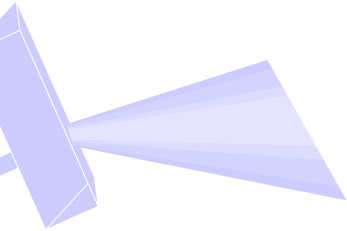How Do Benchmarking Participants Compare with International Benchmarks
of Science Achievement?
The TIMSS science achievement scale summarizes student performance
on test items designed to measure a wide range of student knowledge
and proficiency. In order to provide meaningful descriptions of what
performance could mean in terms of the science that students know
and can do, TIMSS identified four points on the scale for use as international
benchmarks(5) or reference points, and conducted
an ambitious scale anchoring exercise to describe students’ performance
at these benchmarks. Exhibit
1.3 shows the four international benchmarks of science achievement
and briefly describes what students scoring at these benchmarks typically
know and can do. More detailed descriptions appear in Chapter 2, together
with example test items illustrating performance at each benchmark.
The Top 10% Benchmark is defined at the 90th percentile on the TIMSS
science scale, taking into account the performance of all students
in all countries participating in 1999. It corresponds to a scale
score of 616 and is the point above which the top 10 percent of students
in the TIMSS 1999 assessment scored. Students performing at this level
demonstrated a grasp of some complex and abstract science concepts
in earth science, life science, physics, and chemistry, and showed
an understanding of the fundamentals of scientific investigation.
The Upper Quarter Benchmark is the 75th percentile on the science
scale. This point, corresponding to a scale score of 558, is the point
above which the top 25 percent of students scored. Students scoring
at this benchmark typically demonstrated conceptual understanding
of some science cycles, systems, and principles.
The Median Benchmark, with a score of 488, corresponds to the 50th
percentile, or median. This is the point above which the top half
of students scored on the TIMSS 1999 assessment. Students performing
at this level typically were able to recognize and communicate basic
scientific information across a range of topics.
The Lower Quarter Benchmark is the 25th percentile and corresponds
to a scale score of 410. This score point is reached by the top 75
percent of students and may be used as a benchmark of performance
for lower-achieving students. Students scoring at this level typically
could recognize some basic facts from the earth, life, and physical
sciences presented in non-technical language.
Exhibit
1.4 displays the percentage of students in each participating
entity that reached each international benchmark, in decreasing order
by the percentage reaching the Top 10% Benchmark. If student achievement
in science were distributed alike in every entity, then each entity
would be expected to have about 10 percent of its students reaching
the Top 10% Benchmark, 25 percent the Upper Quarter Benchmark, 50
percent the Median Benchmark, and 75 percent the Lower Quarter Benchmark.
Although countries such as Latvia (LSS),(6) Italy,
Israel, Malaysia, and Lithuania, and Benchmarking participants such
as the Delaware Science Coalition, came fairly close, no entity followed
this pattern exactly. Instead, the high-performing entities generally
had greater percentages of students reaching each benchmark, and the
low-performing entities had lesser percentages.
Among the high performers, for example, the Naperville School District,
Singapore, and Chinese Taipei had more than 30 percent of their students
reaching the Top 10% Benchmark, more than half reaching the Upper
Quarter Benchmark, four-fifths or more reaching the Median Benchmark,
and almost all (94 percent or more) reaching the Lower Quarter Benchmark.
In contrast, the four lowest-performing Benchmarking participants,
all urban districts, had no more than four percent of their students
reaching the Top 10% Benchmark, 10 to 12 percent reaching the Upper
Quarter Benchmark, and just about one-third reaching the Median Benchmark.
The lowest-performing countries of South Africa and Morocco had almost
no students reaching the Top 10% Benchmark, only one or two percent
reaching the Upper Quarter Benchmark, five or six percent reaching
the Median Benchmark, and no more than 20 percent reaching the Lower
Quarter Benchmark.
Although Exhibit
1.4 is organized to draw particular attention to the percentage
of high-achieving students in each entity, it conveys information
about the distribution of middle and low performers also. For example,
several countries, including Belgium (Flemish),(7)
Hong Kong, Malaysia, Lithuania, and Thailand, had greater percentages
of students reaching the Median and Lower Quarter Benchmarks than
might be expected from their percentages of high-performing students.


